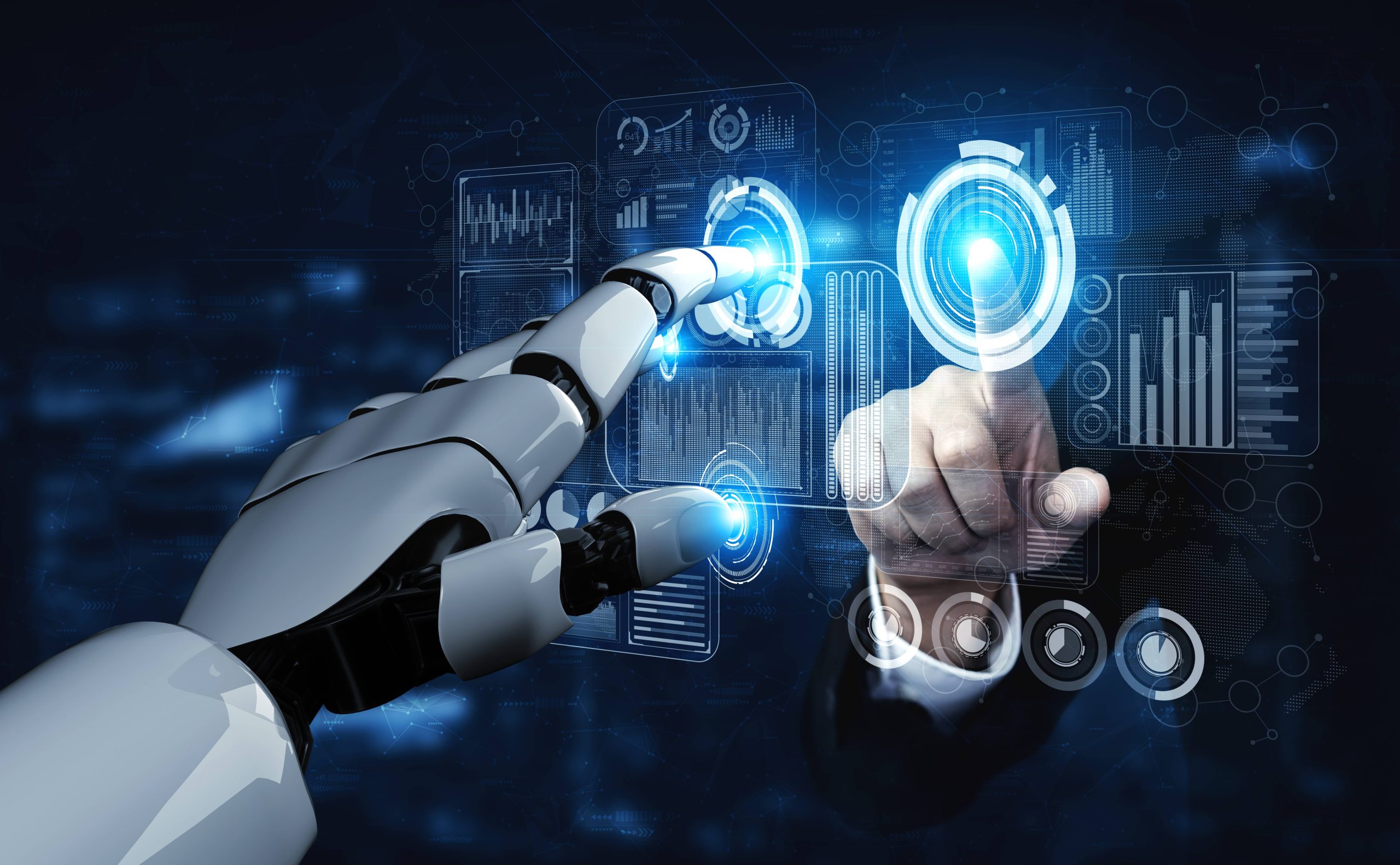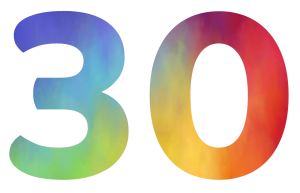Share
Discover 10 Powerful AI Trends 2024

In a world where technology is advancing at a breakneck pace, it’s easy to get lost in the whirlwind of new gadgets, apps, and innovations. But let’s cut through the noise for a moment and focus on something that’s genuinely reshaping our world: Artificial Intelligence (AI). And no, I’m not talking about the sci-fi, robot apocalypse kind of AI. I’m talking about the kind that’s subtly (and not-so-subtly) altering the way we live, work, and play.
AI: The Talk of Google
In the bustling world of tech, it’s not every day that a single topic dominates the conversation. But at the recent “Made with Google” event, AI wasn’t just a side note—it was the main act. Let’s dive deeper into how Google is harnessing the power of AI and what it means for the future.
Since Google launched BARD, their version of ChatGPT, in March 2023, they have been making great strides in integrating AI with many Google applications. Google is expanding its AI capabilities with a personal AI assistant, an AI-powered photo editing tool, and enhanced AI features in Chromebook and Pixel phone.
AI-Powered Photography
One of the standout features showcased was the AI-powered “best take” feature in Google Pixel phone cameras. Now, let’s be honest, we’ve all been there—trying to get that perfect group shot, only to find someone blinked or made a weird face. Google’s solution? Use AI to take multiple photos in quick succession and then create a composite image where everyone looks their best. The AI analyzes each shot, selects the best take for each individual, and stitches them together for that perfect group photo. It’s like having a professional photographer’s discerning eye, but it’s all done in real-time by an algorithm.
The Future of Image Editing
While this isn’t directly a Google product, the ripple effects of AI in the tech world were evident when Adobe’s Stardust project was mentioned. This project, which boasts an object awareness feature, is a testament to the potential of AI in image editing. It offers capabilities that were once thought to be the domain of expert graphic designers. Now, with the power of AI, intricate image manipulations can be done with a few clicks, making professional-level editing accessible to more people.
AI in Recruitment: A Glimpse of What’s to Come
While LinkedIn’s new AI-assisted recruiter isn’t a Google product, it’s worth noting how AI is revolutionizing various industries. This tool, which uses natural language processing, is a game-changer for HR professionals. By leveraging vast amounts of data, it can sift through profiles and find qualified candidates at a speed that no human recruiter could match. It’s a hint at how AI will be integrated into various professional tools in the future, making tasks more efficient and accurate.
The Marriage of Vision and Dolly 3 with GPT 4 – Implications for 2024
In the realm of AI, the combination of different technologies often leads to results that are greater than the sum of their parts. One such ground-breaking fusion is the integration of Vision, Dolly 3, and GPT 4. At its core, this combination is about harnessing the strengths of each individual technology and creating a unified AI system that can perform tasks previously deemed impossible. Vision, as the name suggests, is all about visual processing, allowing AI to “see” and interpret images. Dolly 3, on the other hand, is designed to generate images based on textual descriptions. And then there’s GPT 4, the latest iteration of the ground-breaking language model that can understand and generate human-like text.
One of the standout capabilities of this trio is its ability to generate creative descriptions. Imagine feeding an image into this system. Vision would interpret the image, GPT 4 would craft a detailed and creative description, and Dolly 3 could then use that description to create a new or altered image. It’s a cyclical process where each technology feeds into the other, resulting in a continuous loop of interpretation, description, and creation.
The implications of this technology fusion are vast. Imagine using this trio to create images and text for social media posts or to create an email or blog post based on an image. In the world of graphic design, artists could use this system to quickly iterate on concepts, transforming images based on client feedback without having to start from scratch. In the realm of content creation, writers could visualize scenes from their stories, aiding in the storytelling process. Even in education, students could use this technology to visualize complex concepts, making learning more interactive and engaging. Mind blowing isn’t it?
As these technologies continue to evolve and more integrations emerge, the boundaries of what’s possible will continue to expand. Today, it’s about transforming images and generating descriptions. Tomorrow? The possibilities are limited only by our imagination.
How AI Will Continue to Influence the Creator Economy in 2024
If you thought AI was just for tech geeks and big corporations, think again. Over 50% of the presentations at the Vid Summit conference discussed AI in some capacity. From content creation to marketing strategies, AI is making its mark in the creator economy. It’s not just about algorithms and data; it’s about harnessing AI’s power to create, innovate, and inspire.
One of the most immediate impacts of AI in the creator economy is in the realm of content creation. AI tools are now assisting creators in generating content, be it written articles, music, or even visual art. These tools can provide suggestions, automate repetitive tasks, or even create content from scratch based on certain parameters. For creators, this means more time to focus on the creative process and less time on mundane tasks. There’s MidJourney, Leonardo, Lenso, DallE, Stable Diffusion and so many others are being added all the time. For 2024, accessibility AI tools for content creation will become easier, cheaper and more wide-spread.
AI and the Gig Economy: Implications for Traditional Work in 2024
The gig economy, characterized by short-term contracts and freelance work as opposed to permanent jobs, has been on the rise for the past decade. Platforms like Uber, Airbnb, and Upwork have become household names, representing a shift in how people view work and employment. With the integration of AI into this space, the dynamics are set to change even further.
One of the most immediate applications of AI in the gig economy is in the realm of job matchmaking. Platforms are using AI algorithms to better match freelancers with suitable gigs.
Then there is automation of repetitive tasks. AI tools are becoming adept at automating repetitive and mundane tasks. For gig workers, this could mean using AI-driven tools to handle invoicing, schedule management, or even customer interactions. This automation allows freelancers to focus on the core aspects of their work, increasing efficiency and productivity.
The traditional 9-to-5 work model might become less common in 2024 and beyond as the lines between gig work and permanent jobs blur. With AI handling routine tasks, human workers might take on more strategic, creative roles, leading to a shift in work dynamics.
Will AI Intelligence Surpass Human Intelligence in 2024 and Beyond?
The SoftBank CEO’s prediction that AI will surpass human intelligence by 2030 might sound like a bold (or even alarming) statement (https://apnews.com/article/japan-softbank-masayoshi-son-ai-28e82a3b405dab8ca2a83d411e99847f). But considering the rapid advancements in AI technology, it’s a future that seems plausible. It paints a picture of a future where the lines between human and machine blur, where possibilities are endless, but so are the challenges. As we stand on the cusp of this new era, it’s essential to approach it with foresight, responsibility, and a commitment to harnessing AI for the greater good.
AI algorithms are already assisting doctors in diagnosing diseases with greater accuracy. We also see that AI-driven personalized learning platforms are already tailoring educational content to individual students’ needs, ensuring optimal learning outcomes.
With the development of autonomous vehicles, AI is set to revolutionize transportation. By 2030, it’s plausible that our roads will be dominated by self-driving cars, reducing accidents and optimizing traffic flow.
Companies like Google, Bing, and Meta are not just passive observers in this AI-driven future; they are the architects. Their investments, research, and innovations will shape the trajectory of AI’s development. As these tech giants push the boundaries of AI, they also bear the responsibility of ensuring its ethical and responsible deployment.
Implications for a Future Dominated by AI Technology
As we stand on the precipice of a new era, where artificial intelligence is poised to surpass human cognition, it’s imperative to look beyond the marvels of technology and delve into its broader ramifications. The future, shimmering with the promise of AI-driven possibilities, also casts shadows of uncertainty. How will this paradigm shift that is facilitated by AI technology reshape our societies, economies, and personal identities?
Economic Shifts: As AI systems become more integrated into various industries, we might see significant economic shifts. Jobs that involve repetitive tasks could be at risk, while new roles related to AI oversight, ethics, and maintenance will emerge.
Ethical Dilemmas: The rise of super-intelligent AI will bring forth ethical challenges. Who is responsible if an AI makes a mistake? How do we ensure that AI systems are unbiased and fair? These questions will become central to societal discussions.
Human Identity and Purpose: If AI surpasses human intelligence, it will prompt introspection about human identity and purpose. What roles will humans play in a world dominated by super-intelligent technologies? Will we collaborate with AI, or will there be a competitive dynamic?
Regulation and Control: Controlling and regulating super-intelligent AI will be crucial. There will be a need for global cooperation to ensure that AI advancements benefit humanity as a whole and don’t lead to unforeseen negative consequences.
Confronting 2024 and Beyond Head-On
In the grand scheme of human history, every technological leap has been a double-edged sword, offering both unprecedented opportunities and new challenges. As AI’s relentless march forward promises to redefine the very fabric of our existence, we’re faced with a quintessential conundrum: It’s not about fearing the future, but about confronting it with a healthy dose of skepticism, introspection, and responsibility. As we navigate this brave new world, let’s remember that while machines might surpass us in intelligence, the essence of humanity—our values, ethics, and connections—remains irreplaceable. In the end, it’s not just about how advanced our tools become, but how we choose to wield them.
Check out our other Posts on Artificial Intelligence:
What is ChatGPT and Should the Travel and Tourism Industry Take it Seriously?
Transforming Travel and Tourism: The Game-Changing Impact of AI Technology
10 Innovative Tourism Product Ideas Using AI-Powered Technology
We would love to hear from you. Engage with us. Leave a comment below.
About the Author:
Kevon Wilson
Senior Analyst
Leve Global

Kevon Wilson, is a premier researcher and strategist. He has more than 16 years’ experience in research and digital marketing.
He is co-author of many of Leve Global’s research publications such as Big Data – Delivering the Big Picture to Drive Competitiveness, Everything You Need to Know About Internet Marketing, and The Top Ten Emerging Markets.
